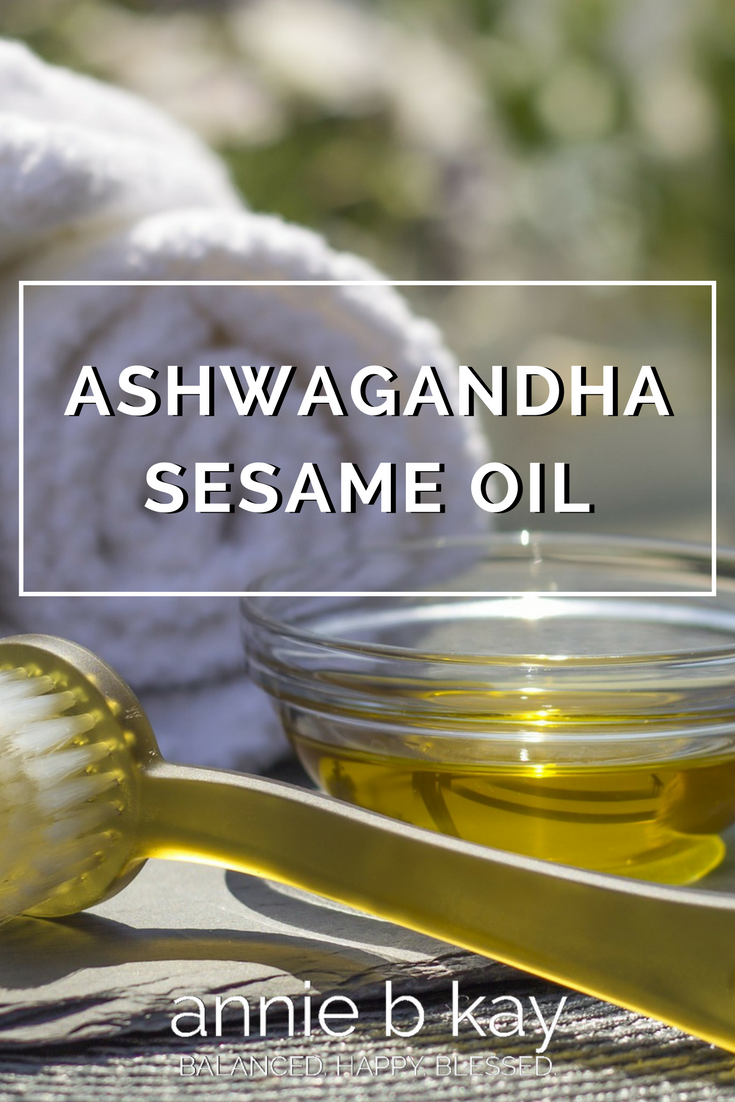
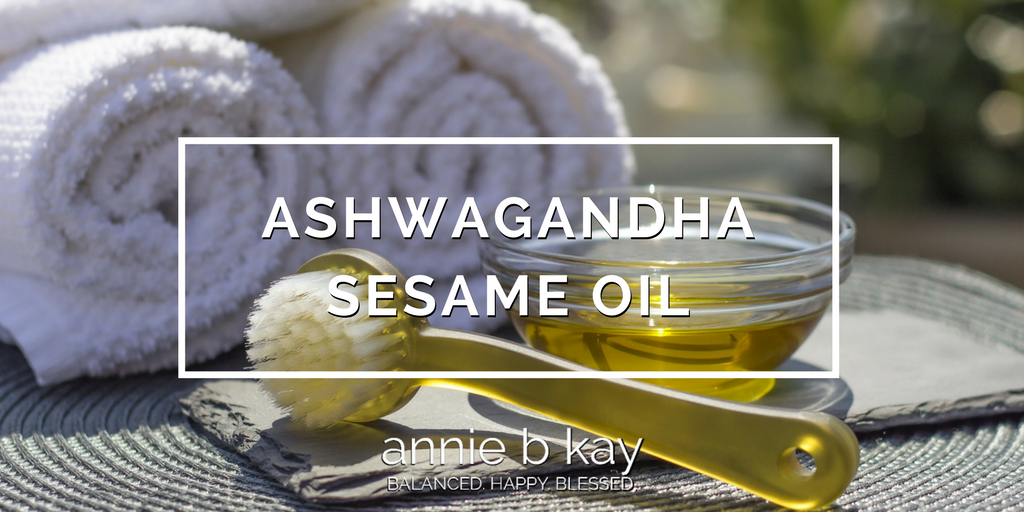
Tis the season to begin to think about making my fall batch of Ashwagnada sesame oil to warm our way through the fall.
Bows to my colleagues in the Kripalu School of Ayurveda (KSA). Several years ago I got to sit in on part of their training for Ayurveda Health Counselors and got a lovely intro to the Ayurveda way of herbs from Rosie Mann and the KSA faculty.
My husband and I both love this oil, and he has noticed how it is soothing and quiets his mind like it did mine the first time I practiced abhyanga (Ayurvedic oil self-massage) with it during my training. It does have a musky manly scent in sesame oil. We rub it on our feet at bedtime, and more widely when our minds get chattering too incessantly and we have time to relax (it can be a sedative, so I haven’t tried it on a workday yet).
Ashwa…what?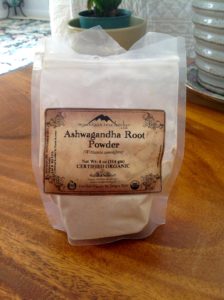
Ashwagandha is a root used in a number of Ayurvedic preparations. It’s a little famous for its aphrodisiac properties, but it is also calming and strengthening (ashwagandha means horse-smell in Sanskrit, after the musky scent of the root itself). Vata-pacifying, it is great for both my husband and I as we enter our hopefully wise Vata years of life.
Ashwagandha Sesame Oil Recipe
Ingredients
- 1/2 cup dried ashwagandha root
- 8 cups filtered water
- 2 cups organic sesame oil
Directions
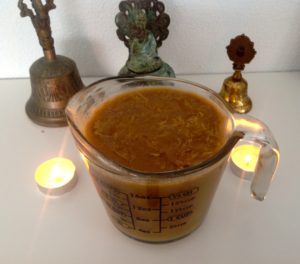 You will need a strainer and cheesecloth, as well as a medium-large saucepan and a container for the oil.
You will need a strainer and cheesecloth, as well as a medium-large saucepan and a container for the oil.
1. Gather all ingredients and bless them. I say a little prayer over them like the one my teacher Pam taught me, then ask the root to bless us with its healing gifts.
2. Pour water into the saucepan, and add ashwagandha root. Gently stir clockwise (only clockwise) with a wooden spoon or whisk.
3. Heat medium-low until reduced to 2 cups. This takes 2-3 hours. There is a point where the ashwagandha will thicken into the fluid – the texture will shift.
I like to let my botanical concoctions spend some time on the alter. Prayers, alters, it is all about infusing what I am making with love and intentions.
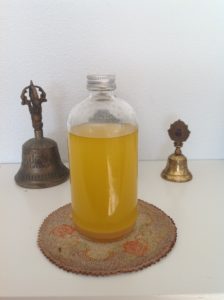 4. Rinse saucepan. Strain the fluid through a sieve, then strain several additional times through a cheesecloth until you have a thick fluid.
4. Rinse saucepan. Strain the fluid through a sieve, then strain several additional times through a cheesecloth until you have a thick fluid.
5. Pour this mixture back into the saucepan, and add sesame oil. Heat at low-medium, occasionally gently stirring clockwise. Again, you will see the oil change as it absorbs the ashwagandha root. I found it became richer and a smidgen cloudy (but, if I had strained more thoroughly it may be more rich yet clear)…the batch I have from the experts is more clear.
6. Once you see the oil change (this took about an hour), let it cool, then strain the oil off of the remaining root-water, into a clean glass jar.
7. Enjoy as a daily oil massage (I would do a test on the weekend!), or rub on your feet and/or top of your head before bed.
Namaste!
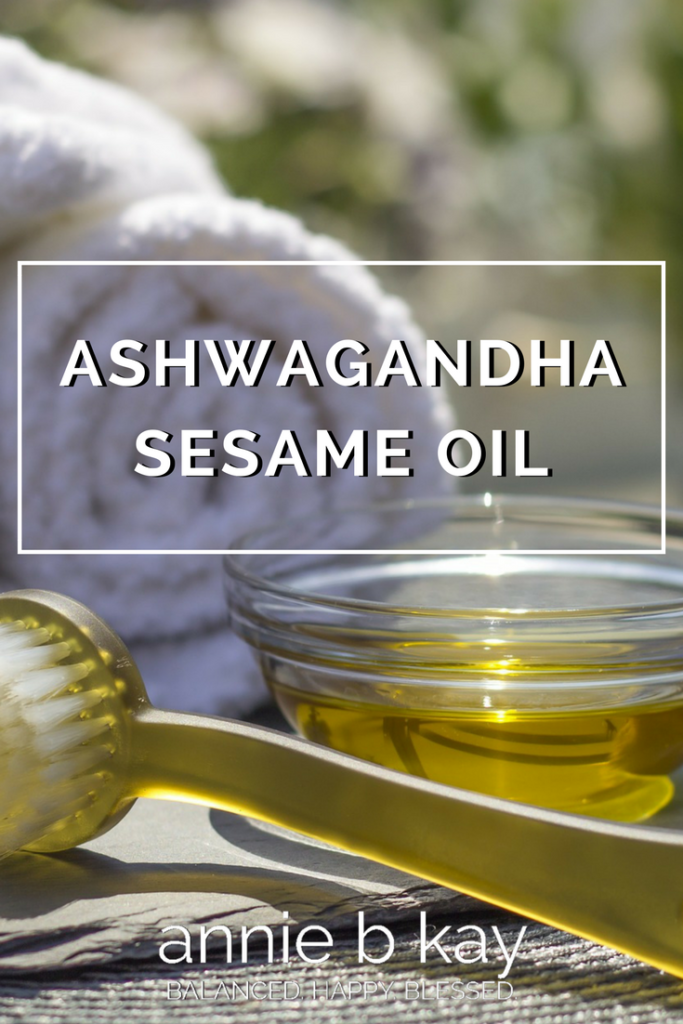
Pinterest
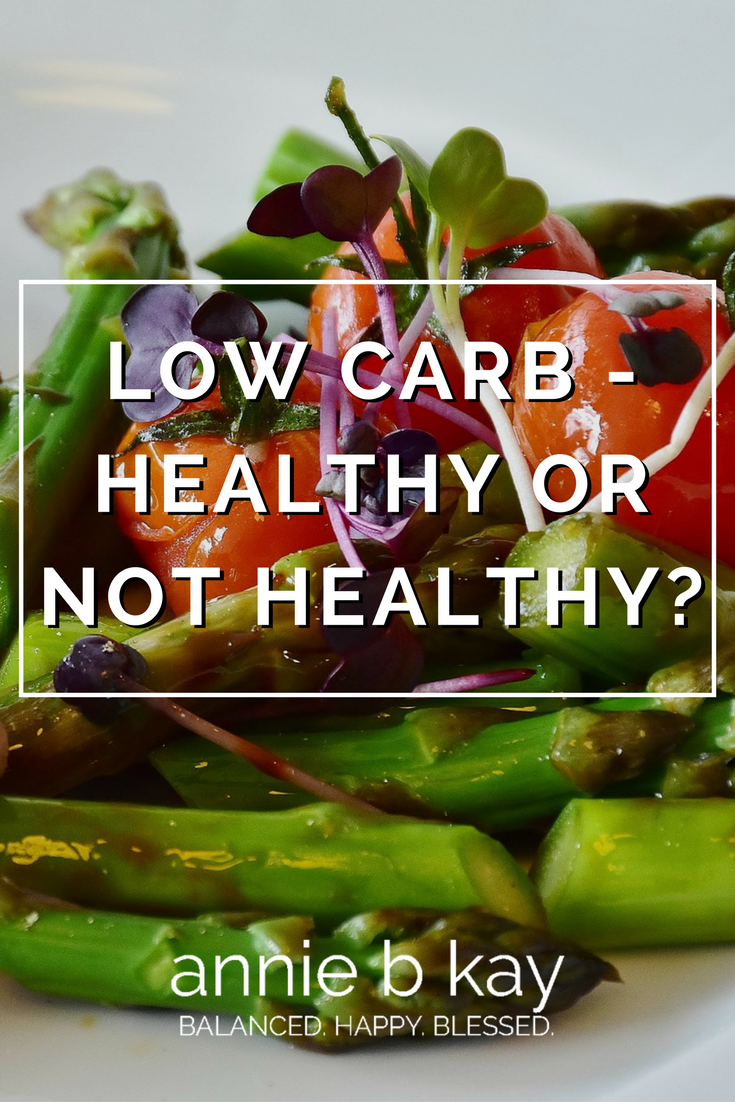
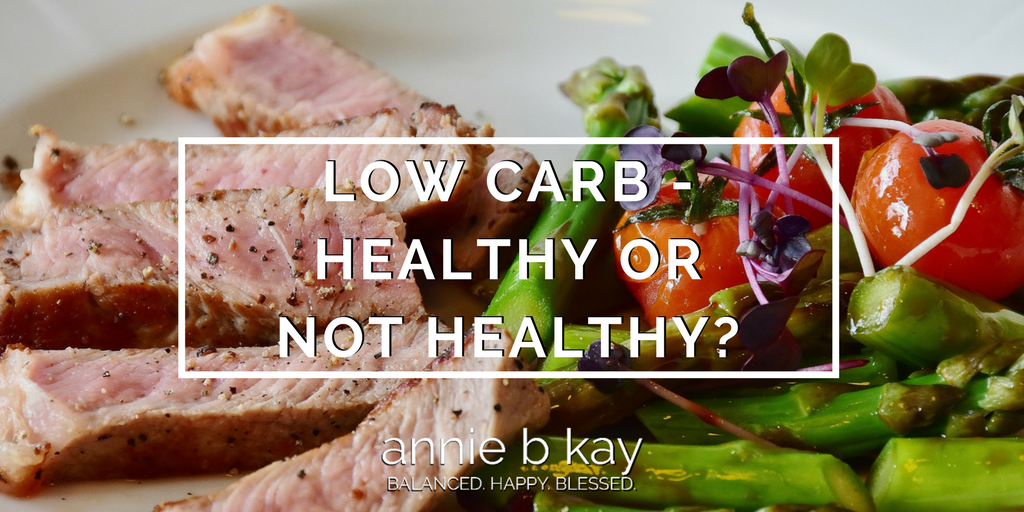
Bread. Chewy crusty bread dipped in a fantastic olive oil and a bit of sea salt. Nutritional friend or foe?
Giving up bread, potatoes, pasta, and even beans because they are carbohydrate-rich foods is a decades-old strategy that’s been presented in a wide variety of popular diets, including Atkins, South-Beach, Paleo, UltraMetabolism, and now Bright-Line.
Just what is a low-carb diet, is it healthy for all, for some or no one?
If you ask 10 people just what a low-carb diet is, you’ll get 10 different answers. That’s because the real clinical data on just what a low-carbohydrate diet is and if, how and who it helps is cloudier than you’d imagine if you believe what you read in the popular press. So, let’s begin with what a low-carbohydrate diet is and is not.
Carb Basics
Carbohydrates break down into sugars and are the energy currency of the body. We need sugar (glucose) for brain function and energy. Most glucose (what the sugar carb breaks down to and the fuel for the body) comes from carbohydrate-containing foods, but the body can also convert protein and fat into glucose (inefficiently and with side effects).
The National Institutes of Health (NIH) set a recommendation of 130 g/day of carbohydrate, based on the amount of glucose needed by the brain and body. The Institute of Medicine (IOM) recommends that 45-65% of daily calories come from carbohydrate. The IOM also set a fiber intake recommendation of 25 g/day for women, and 38 g/day for men.
For comparison’s sake, one serving of carbohydrate (a small slice of bread, or half a banana) contains about 15 g of carbohydrate. If the bread is white bread, it will not have much fiber nor vitamins and minerals unless they are added in the process of fortification. The half banana has about 3 1/2 g of fiber and is a good source of vitamins B-6 and C, potassium and other minerals. So, the banana is what a nutritionist would call more nutrient-dense – that is, calorie for calorie, it gives you lots of nutrients – it’s a higher quality carbohydrate than the bread.
To understand why we’re so low-carb crazy, let’s look at the Standard American Diet (yes, SAD). American men are eating about 287 g of carb per day, and women about 177 g. One-quarter of this carbohydrate intake is from added sweeteners (sugar). Added sweeteners have no nutritive value – not one vitamin or mineral, yet are packed with energy (calories) and absorb very quickly from the gut into the blood stream. How rapidly sugar is absorbed is one of the problems with a highly refined diet high in processed foods (which often acts like just more sugar) and sweeteners – they make you hungry for more. Fiber (which slow the rate that sugar is absorbed from the gut into the blood stream) intakes are about 17 g for men, and 13 g for women. Please note that these intake numbers are changing and not in a more hopeful and healthy direction. Get the picture?
American are eating plenty of carbohydrates, and the type of carbohydrate we are eating is high in sugar and low in fiber. Really low quality, low-nutrition food and lots of it.
A Low-Carb Diet is…
More than the switch from flour and processed grains to whole grains. It’s more than giving up sugar.
A low-carb diet dips below that 130 g/day recommendation of carbohydrates. The most restrictive phase of the Atkin’s diet has 20 gm of carbs in it. When you head down to this level of carbs you are getting your energy from fat and protein. This puts you into ketosis, which is the creation of ketones. While not dangerous in the short term if you drink plenty of water to help your kidney’s flush the ketones out of your body, a common side effect is nasty (nail polish) breath and sweat. It makes you smell, but you’re losing weight and not hungry. My opinion is that over time, this is a very hard diet on your body, and there’s no good data that shows over time people lose more and are healthier from this strategy than others.
So, what do you give up to follow a low-carb diet?
Bread, flour, all grains, even whole grains 🙁 , all fruit :(, starchy vegetables 🙁 like sweet potatoes, corn, peas and squash, beans :(, usually alcohol and of course sugars and sweeteners.
What do you eat?
Lots of meat, fish. Lots of fat. Non-starchy vegetables (which I find many people forget). Usually nuts and nut butters. There are a slew of processed low-carb foods of questionable quality.
Ketosis is different from diabetic ketoacidosis which is a much more dangerous condition of too little insulin and resultant high blood sugar.
Does it work?
Like any highly restrictive elimination diet, low-carb will work because you are eating less. It’s energy-balance basics. What’s handy about low-carb diets is that when you increase your protein and fat intake, you are less hungry than if you ate carbohydrates. So, as a jump-starter to healthier eating and a means of feeling the promise of a lighter body, they can be helpful.
Over the long-term, though, this pattern suffers from what all weight-loss diet patterns suffer from – they are hard to stick with over the long-term and ultimately people struggle to maintain them. There are some additional concerns about this pattern, too. I’ve listed them below.
What the Low-Carb Proponents Forget to Mention
- Your body adjusts to low carb and burning fat as fuel. When you eat a carb again you can become a super-efficient fat-producing machine. So, only do this if you are going to maintain it for the duration.
- A risk for constipation increases – drink lots of water. Your poor kidneys are working triple-time. If you do low-carb, you’ve got to eat your non-starch vegetables, which is a source of fiber that will help prevent constipation. Drink drink drink water.
- Low-carb diets tend to be extra high in saturated fat. While a bit of saturated fat, particularly if it comes from healthful sources like grass-fed organic dairy or grass-fed meats, can be fine, even healthful. When you are eating large amounts of poorer-quality saturated fats, however, the literature still says (despite what you’ve been told of late) you are increasing your risk of heart disease. Sorry. We really don’t know the long-term effects of managing your weight with this strategy. Regular mass-produced bacon, red meat, cream cheese, and butter in limitless qualities is just not healthy.
- Because the glucose you get from carbohydrates is the brain’s (and body’s) preferred fuel source, many following this diet complain of low energy and foggy thinking.
- Most of the quick weight you lose is from water – not fat.
- When you eliminate whole categories of foods, you increase your risk for inadequate nutrition – and low-carb is usually low in a host of vitamins minerals, antioxidants, and fiber. I see this over and over again. Over time, you increase your risk for disease and undermine the smooth functioning of your body.
The Bottom Line?
If you have issues with blood sugar like pre-diabetes, or diabetes, low-carb can be a great strategy to get your blood sugars under control. I’ve seen it work quite a bit. If you know you are over-doing sugar and want a short-cut to moderating, a few days (I find 5 does the trick) of low-carb tends to reduce your cravings. Work with a qualified nutritionist to ensure your diet is rich in nutrients while you do this.
For most of us, let your carb-savvy diet be minimal in refined sugar and refined carbohydrates (cereals, breads, and sweets like cookies and cakes). We all live with or around families and friends, and if your family is anything like mine, cake is part of social events. Have a bite, or a slice and enjoy it. Then get back to your regular practice of whole-food plant-based eating.
The diet that has the most evidence for long-term health is a whole-foods, plant-based diet.
Enjoy nutrient-dense high-quality whole carbohydrates you tolerate like whole grains, whole fruit, vegetables including beans, sweet and white potatoes and other starchy vegetables. If you struggle with weight, have these higher carbohydrate foods with a meal that balances whole food carbohydrates, protein, and fat. A bit of each. The Oldways Ancestral plates do a good job.
We each have a balance of eating, managing stress (which I think is a major cause of weight gain today, in addition to poor-quality food), being physically active in ways you enjoy, and self-acceptance that works. If you struggle with weight, only do the lifestyle changes that you continue forever more. That add to your life rather than restrict. Over time, you will build a healthy and flexible lifestyle.
If you love bread (like I love bread), and are thinking about managing weight, have a little – just not every day at every meal. I think of bread like I think of dessert – it’s a special treat, not an everyday part of my diet.
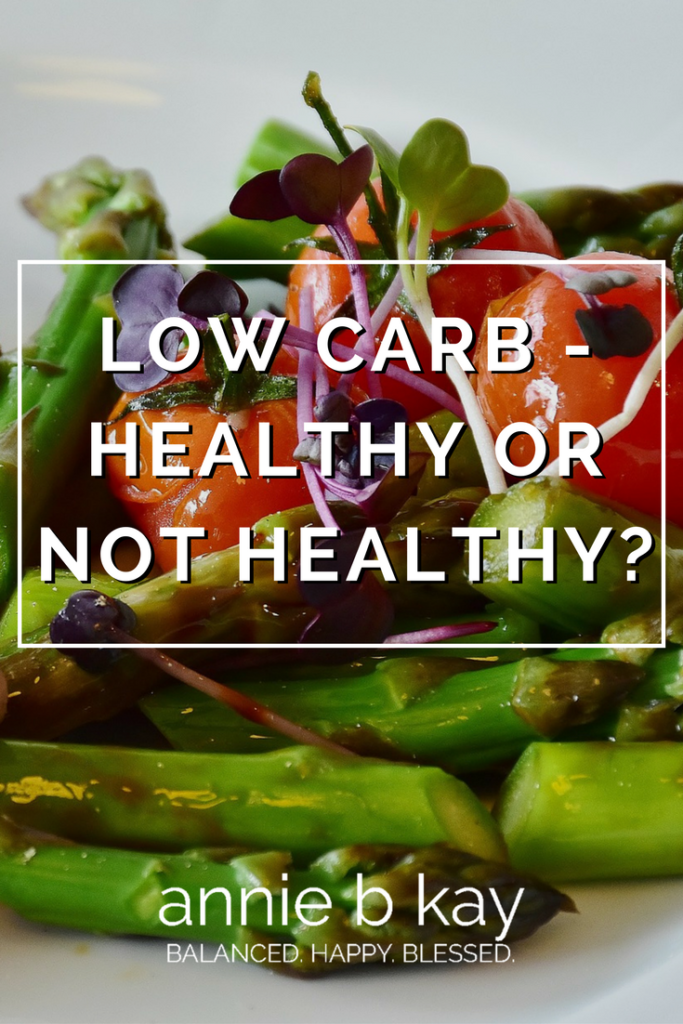
Pinterest


My garden right now is filled with the sweet green goddess known as tulsi.
Tulsi is a type of basil that originated in India. There are several types, like sisters in a family. If you ‘do yoga’, love botanicals, AND you haven’t met tulsi yet, I’m happy for you. Your future includes meeting one of the most sweetly powerful and healing herbs in the canon. I have great sisterhood with this plant and feel that I am introducing you to one of my coolest and best friends. When I refer to her, I am referring to the big T – the green goddess herself – tulsi.
A distinguishing feature of tulsi is its fragrance – it’s rich, buttery and flowery with an undertone of funk. Tulsi (which translates as “incomparable one” in Sanskrit) occupies an auspicious place in yogic/Ayurvedic tradition. It is thought to be an embodiment of the goddess Lakshmi, she of abundant good fortune, of being held in esteem in a community, and of generosity. In India, many homes have a tulsi plant at their doorstep, and women (and I’m sure men) have a tulsi plant near their bed so that the gentle breeze carries the scent of tulsi to them as they sleep, bestowing them with ageless beauty.
In the Garden
Much like the goddess, my tulsi seems to have a mind of her own. She goes where she wants, comes up really late (late June this year – thank goodness I held her space!). I have not been successful at growing her from seed so that I can get a jump on the season – nope, not how she’d prefer to roll. Yet, tulsi comes rolling back, year after year in her own preferred manner my garden. I often smell tulsi and then oh, there’s a plant popping up amongst the roses or corn.
I never needed tulsi seeds, though I’ve purchased many packets. My original tulsi plant came to me auspiciously – from Sweetwater Sanctuary in VT. Pam Montgomery gave me and my fellow apprentices plants (in 2013), and mine has happily multiplied into tulsiville.
Culinary & Preserving
I’ve tried for years to make a good oil infusion of tulsi but have been only modestly successful at capturing that unique fragrance in oil. Drying, I find, works best for me. I’ll then drink it as tea through the cooler months. If I have a gathering of gal herbalists I may attempt herbalist Brittany Wood Nickerson’s yellow cake which she served once incorporating dried tulsi….magnificent. She’s just come out with a cookbook filled with scrumptious herbal fare, but the way, which I strongly recommend.
You can also make a pesto with tulsi.
To dry tulsi or any herb (I have mugwort, cilantro, lemon balm and mint drying now), gather a bunch of it, tie it into a bundle at the stem, and hang in a place that will be warm and dry. Attics are great if they are reasonably well ventilated, and you can find a place to hang your crop. After a couple dry weeks (challenging this year), cut the bundle down. For plants that I intend to use as a tea of spices, I pull the dry leaves off the stem and place them in glass jars. Between Mason and jelly jars, you have a jar for any quantity of herb.
Medicinal & Energetic
From a Western medical perspective, tulsi is an adaptogen and has been studied for a variety of uses. Adaptogenic activity means that, like ginseng, it contains a complex array of phytonutrients that act in different ways but tend to overall support homeostasis – or healthful balance. So, tulsi tea is a terrific drink through the fall when back-to-whatever stress and cool winds conspire to give us colds and other crud.
Energetically, I’ve done a number of shamanic journeys with tulsi and here’s what I learned. Tulsi embodies all the goddesses of tantra – she’s Lakshmi, Deva, and yes Kali and all the rest – all rolled into one. She just might be the MahaDevi – the mother goddess. This is my own perspective colored, no doubt by my study of the goddesses of tantra. I know and love them, and draw on them often. In my study, these goddesses represent parts of ourselves (even if you are a man – we each contain both divine masculine and feminine within us). So, interestingly, I’ve found tulsi is energetically adaptogenic as well. From my discussions with other herbalists in my tradition who work energetically with plants, my view is not unique.
You can increasingly find tulsi plants and seed at your local garden shop. If not, try Mountain Rose Herbal or Horizon Herbs.
Have a beautiful day.

Pinterest


There is much talk of integrative health these days. We’re all happy when we have an integrative physician. So just what is integrative health? What is integration?
Integrative Health
The National Center for Complementary and Integrative Health (NCCIH) – part of the National Institutes of Health (NIH) – thinks a lot about this, and has helped with some definitions that feel like a good (conservative, to be sure) place to begin. They say integrative health care is bringing complementary (treatments not part of Western medicine) and conventional Western medicine together in a coordinated way. So, using both the Western allopathic medical system, but also things like yoga, nutrition (yep, still pretty much considered, for the most part, complementary), acupuncture, and meditation in a skillful and informed way. These complementary modalities are ones that might not have a deep collection of Western scientific studies that verify their clinical use, but each of these modalities has been shown to be helpful. If we consider practice-based observational evidence, many of these practices have thousands of years of evidence. I like that way of thinking about integrative health. The skillful use of a wide array of modalities to support an individual’s care.
That’s health – but what does integration mean in life? We live in such a spinning world, where we often don’t have time to reflect on nor absorb what happens to us or around us. Experiences come fast and furious. It is, without question, an excellent time to practice.
I honestly think that it’s impossible to avoid stress and that we need to think about how we manage stress differently today. The world is different than it was even twenty years ago. The planet is a lot less stable and it’s impacting everything. In order to be healthy today, we need to be adaptive. Adaptive to chaos. Relax while tumbling. Release into the flow.
Integration
Integration, in an experiential or spiritual context, happens after an experience, when you take time to be quiet, restful and take in what happened. Integration is the energetic digestion of an experience. It requires time, quiet, rest, reflection. Relaxation. Usually more than is convenient in your busy day. Thus the rub.
When we hop from event to event in our lives – and no judgment here, I do it myself when I lose hold of that pesky schedule and over-schedule myself – we just don’t integrate. The pieces of us don’t come together in a new way (which is often the point, particularly if we seek positive or expansive ecstatic experience).
Try Less
So, we practice. We smuggle five minutes of reflective practice into our morning routine. We turn off the news during dinner. We eat breakfast in silence. One the wisest pieces of advice I got from an Astanga yoga teacher (the incomparable Bhavani Maki in Kauai) was “Try Less.” When I feel overwhelmed, I think about what in my schedule I can let go of. What is not really serving me? What perhaps used to work but no longer does? It’s not an easy practice.
We resist the temptation to reprimand ourselves for not being perfect. We breathe and relax instead.
We fall in love – on purpose – with our contemplative practice. We fall in love with our breath and the amazing places it can take us if we only just settled down to feel it. We fall in love with our meditation or our deep relaxation practices for the expansive velvet depth of our interior landscape they open to us. Maybe for 5 minutes. Maybe for a day.
So, if you are one to have experiences – expansive experiences – then please take a day or two afterward – if possible, to give yourself the gift of integration. Of reflection and relaxation and allowing the pieces of you to come together in a new way. Of silence – be it listening to the birds, meditation or walking in nature.
Here’s wishing you integrative health within a wonderful collection of loving and talented health providers, and deep integration of the expansive experiences in your life.

Pinterest
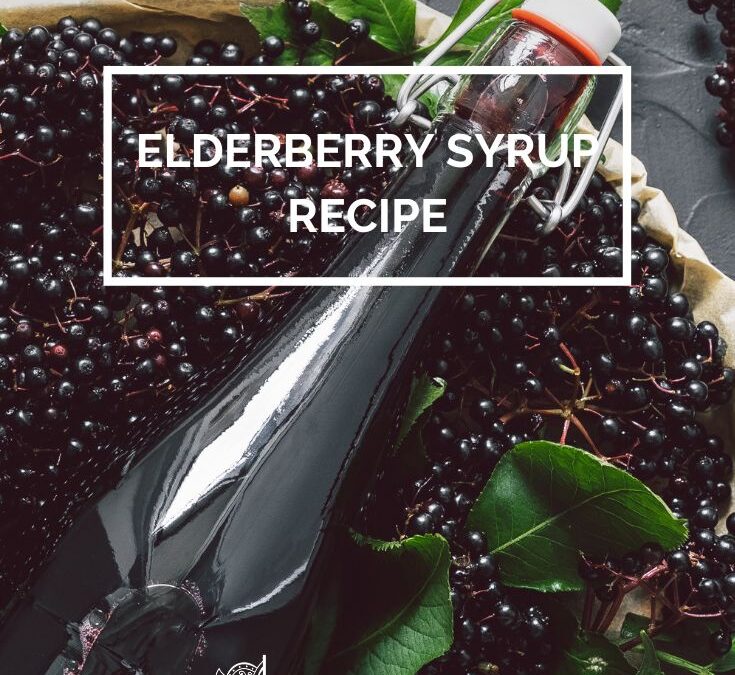
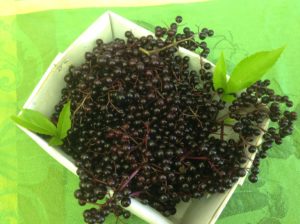
Deep purple elder-beauty
Updated 12/13/2023
I’ve been a smidgen obsessed with elderberry this year and it has heard my prayer. Not only did my husband gift me a beautiful elderberry bush for our yard, but a neighbor with a gorgeous mature bush gave us the green light to enjoy some of his bounty. So, I’ve been up to my elbows in elderberry.
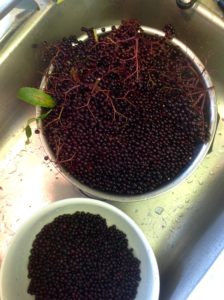
Give yourself time to rinse & remove stems
Elderberry is a folk medicine immune supporter, and even today you can find it in commercial cough syrup and lozenges. Clinical trials suggest that it reduces the duration of the flu, and it may have antiviral, anti-inflammatory and anti-cancer properties. From a plant-spirit energetic perspective, elder aids with journey work (such as shamanic visioning) and is, simply, an elder filled with primordial wisdom.
Most elderberry syrup recipes call for about 2/3 cup of berries for a season’s supply of syrup. Well, because I had a bucketful, mine is a little stronger! It’s delicious and rich. In the literature there are warnings about elderberry irritating the gut if taken raw and/or in excess, so you can overdo it! I intend to take 1 tsp daily for 3-5 days at the first sign of cold or flu.
Give yourself a couple of hours to make this start to finish. This recipe made about 6 cups of syrup.
Elderberry Syrup Recipe
Equipment
In addition to a large pot for cooking and processing, you will need a strainer or jelly bag, and containers for your syrup – I used jelly jars and processed them as if I were making jelly to give nicely sealed jars for gifts, and also kept a batch in a larger unsealed jar in the fridge to be used over the next 3 months by my family and me.
Jelly jars come with glass jars, a flat sealing lid, and a ring that twists over the sealing lid to keep it on the jar.
Ingredients
- 8 cups elderberry, washed and stems removed
- 4 cups water
- 1 Tbsp fresh ginger, peeled and sliced
- 5 whole cloves
- 1/2 tsp cinnamon, ground
- 1 cup honey
- 1-2 tsp pectin
Directions
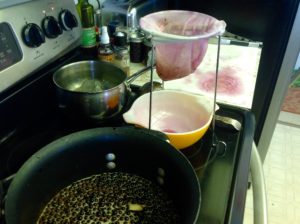
Full bedlam-making elderberry syrup
- Place berries, spices, ginger and honey in a large pot and bring to a rolling boil.
- Stirring, add pectin and boil for another minute.
- Lower heat to medium and simmer for 15-17 minutes.
- Strain through jelly bag, and place into jars.
As I mentioned I used jelly jars and processed them like jelly, which entails boiling the jars (pouring hot liquid into a cold jar can make it crack) and sealing the lids. After filling the jars with syrup and topping with sealing lids, I tightened the lid rings and placed the jars upside down for about 5 minutes. This helped them seal. Once that’s done, I check to see if the jar sealed by pressing the center of the lid. If I can push the lid down and it pops up, no seal. If the lid is concave and pressing it doesn’t move it, it’s sealed. Often, lids will seal throughout the day – I can hear “pop” from the next room when a lid seals. Jars that don’t seal need to be refrigerated, and the syrup used within 3 months. I keep those that seal all season.
Making your own jelly and syrup can be a sticky mess, but I am always amazed by the wonderful smell, color, and flavor of homemade preserves. It’s a fun thing to do with family or friends who are into it. Little jars of your handcrafted goods make terrific gifts. Make sure not to give away unsealed items or you may be gifting a nice jar of something not-so-healing.

Pinterest



 You will need a strainer and cheesecloth, as well as a medium-large saucepan and a container for the oil.
You will need a strainer and cheesecloth, as well as a medium-large saucepan and a container for the oil. 4. Rinse saucepan. Strain the fluid through a sieve, then strain several additional times through a cheesecloth until you have a thick fluid.
4. Rinse saucepan. Strain the fluid through a sieve, then strain several additional times through a cheesecloth until you have a thick fluid.
















